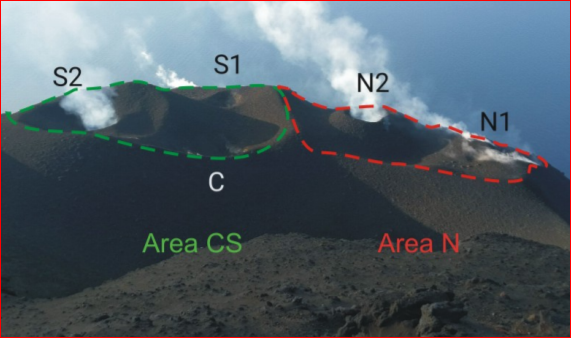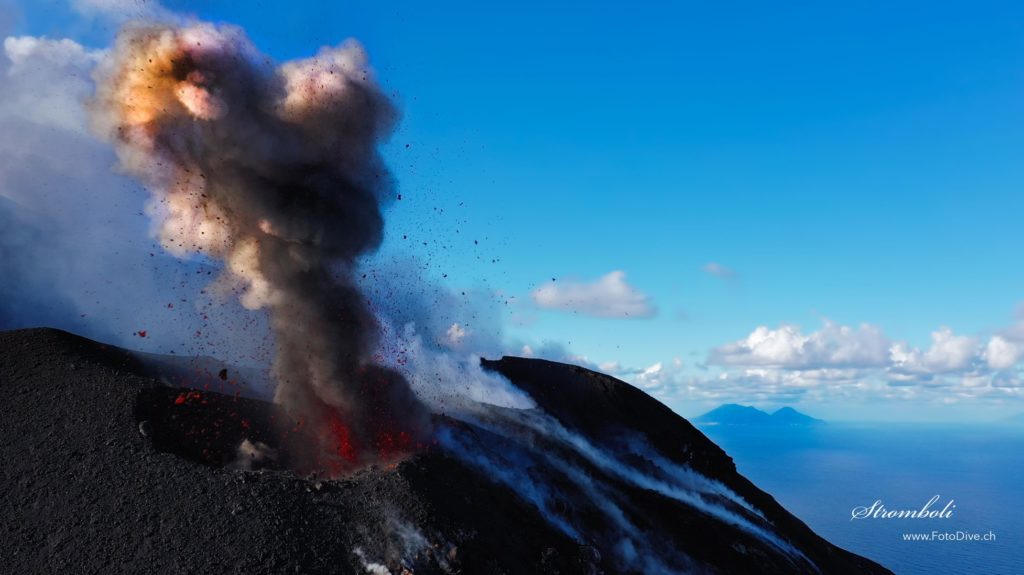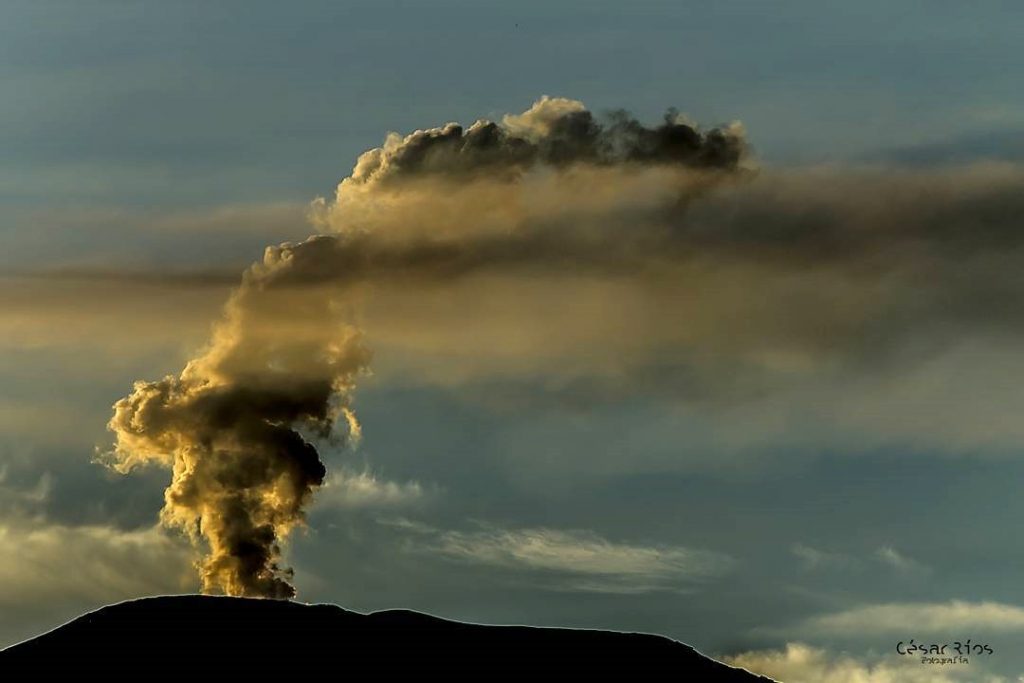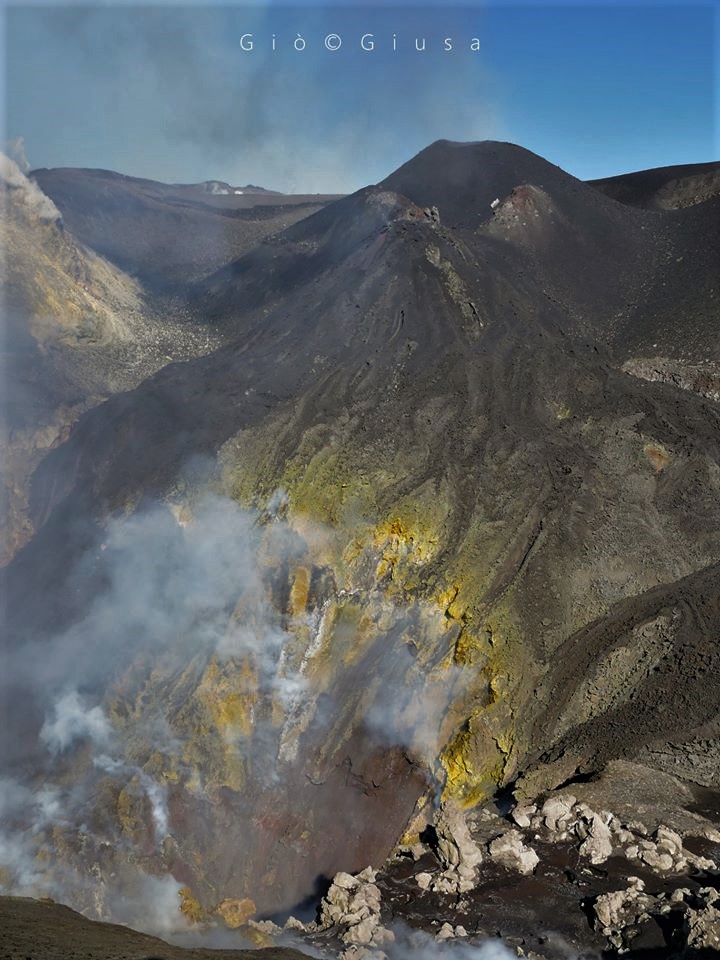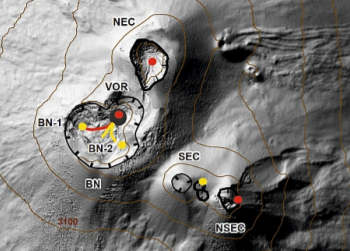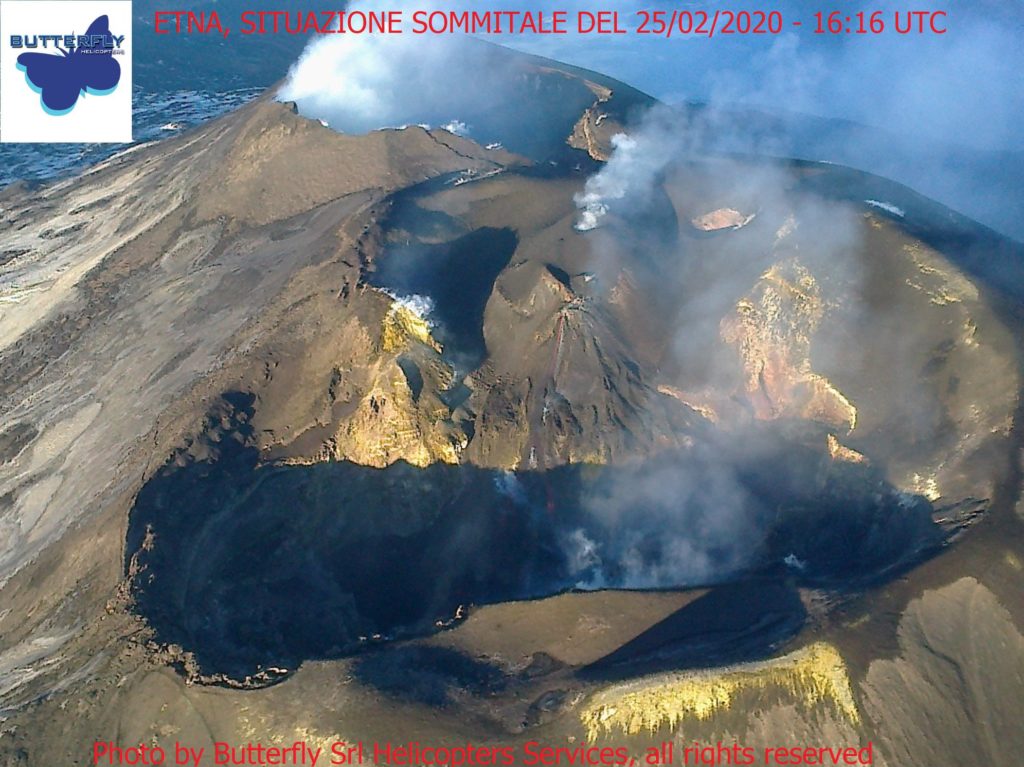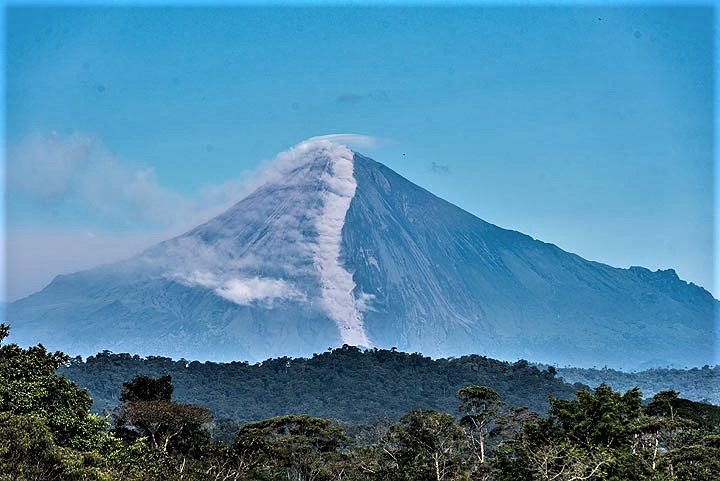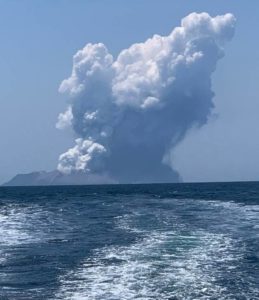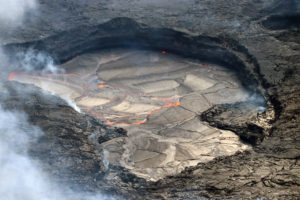February 26 , 2020 .
Italy , Stromboli :
Weekly bulletin from 02/17/2020 to 02/23/2020. (issue date 25/02/2020).
SUMMARY OF THE ACTIVITY STATUS.
In light of the monitoring data, it is highlighted:
1) VOLCANOLOGICAL OBSERVATIONS: During this period, a normal explosive activity of strombolian type was observed accompanied by degassing activities. The hourly frequency of explosions fluctuated between average values (12 events / h on February 21) and high values (21 events / h on February 17). The intensity of the explosions was mainly medium to high in the area of the North crater and medium in the area of the Center-South crater.
2) SEISMOLOGY: The seismological parameters do not show significant variations. There was an increase in the number of landslide signals last week.
4) DEFORMATIONS: Stromboli soil deformation monitoring networks did not show any significant variation to report for the period considered.
5) GEOCHEMISTRY: The flow of SO2 is at an average level. The CO2 / SO2 ratio is at an average value (last update on 02/09/2020). The isotopic ratio of dissolved helium in the aquifer is at low-medium levels.
VOLCANOLOGICAL OBSERVATIONS
The analysis of the images recorded by the cameras placed at an altitude of 400m, at an altitude of 190m and at Punta dei Corvi made it possible to characterize the eruptive activity of Stromboli. During the reporting period, the explosive activity was mainly produced by at least 2 (two) eruptive vents located in the area of the North crater and by at least 3 (three) eruptive vents located in the area of the Center-South crater . All the vents are located inside the depression which occupies the crater terrace.
In the morning of February 21 and 22, 2020, INGV-OE staff carried out an inspection to monitor the explosive activity and the morphological changes of the crater terrace. Here are some considerations on the observations:
In the area of the North crater, the crater N1 presented a flared cone with a slight opening on the North-East side. During the hours of observation, it produced explosions of medium to high intensity (in many explosions, the products reached 200 m in height) emitting coarse materials (lapilli and bombs) with abundant fallout on the sides. Crater N2 had a cone of regular shape with greater erosion and depth than during the previous site inspection (January 13, 2020) and produced an explosive activity emitting coarse materials of low intensity (less than 80 m from height). In the area of the Center-South crater, crater C showed a « pit » crater, from which swelling activity was observed. Crater S1, facing Sciara del Fuoco, showed a wider and deeper crater than during the previous site inspection, produced an explosion of pressurized gas with a small portion of fine materials (ash) of low intensity (less than 80 m height). Crater S2 showed explosions of mainly fine materials sometimes mixed with coarse, low intensity. In this case also, as in the craters N2 and S1, the deepening of the crater must be underlined.
In the northern zone, the explosions were mainly of variable intensity, from low (less than 80 m in height) to high (more than 150 m in height) emitting coarse material (lapilli and bombs). In numerous explosions, the abundant fallout covered the outer slopes of the area overlooking the Sciara del Fuoco and the blocks rolled until they reached the coast. The average frequency of explosions in the North zone varied between 5 and 11 events / h. The explosive activity of the Center-South zone produced explosions of mainly fine materials (ash) sometimes mixed with coarse materials, of medium intensity (less than 150 m high) to high (the products reached 200 m from height). The frequency of explosions in the Center-South zone varied between 4 and 11 events / h.
The amplitude of the volcanic tremor generally had medium-low values, with some oscillations on medium-high values. … / …
Source : INGV.
Read the article : file:///C:/Users/Utilisateur/AppData/Local/Packages/Microsoft.MicrosoftEdge_8wekyb3d8bbwe/TempState/Downloads/BollettinoStromboli20200225%20(1).pdf
Photos : INGV , Willie Fotodive.
Colombia , Nevado del Ruiz :
Weekly bulletin of the Nevado del Ruiz volcano.
The level of activity continues at the level of yellow activity or (III): changes in the behavior of volcanic activity.
Regarding the monitoring of the activity of the Nevado del Ruiz volcano, the COLOMBIAN GEOLOGICAL SERVICE reports that:
The seismicity linked to the dynamics of the fluids, inside the volcanic conduits, presented an increase both in the number of recorded events and in the seismic energy released, compared to the previous week. This seismic activity was characterized by the presence of continuous volcanic tremors, pulses of volcanic tremors, long and very long period earthquakes. The earthquakes presented varying energy levels and spectral content. Some of these signals were associated with gas and ash emissions, confirmed by cameras installed on the volcano and by reports from field staff and officials of the Los Nevados National Natural Park.
The seismicity generated by the fracturing of rocks (volcano-tectonic) has increased in number of earthquakes and in seismic energy released, compared to the previous week. This type of seismicity was localized in the South-South-East, North-West and in the Arenas crater and, to a lesser extent, in the North-West and South-West sectors of the volcano. The depth of the earthquakes ranged from 0.8 to 6.3 km. The maximum magnitude recorded during the week was 1.7 ML (local magnitude), corresponding to the earthquake recorded on February 19 at 9:31 p.m. (local time), located 2.3 km southeast of the crater. Arenas, at a depth of 3.5 km. .
The deformation of the volcanic surface, measured from GNSS stations (Global Navigation Satellite System), did not show any significant change or deformation process during the week. However, it is important to note that some minor changes have been observed in the data obtained by the inclinometers.
In tracking information provided on the Mirova and NASA FIRMS web portals, the latter have reported moderate energy thermal anomalies on the volcano in the past week.
Source : Ingeominas .
Photo : Cesar Rios.
Italy / Sicily , Etna :
Weekly bulletin from 02/17/2020 to 02/23/2020 (issue date 2/25/2020)
SUMMARY OF THE ACTIVITY STATUS.
In light of the monitoring data, it is highlighted:
1) VOLCANOLOGICAL OBSERVATIONS: Strombolian and effusive intra-crater activity of the Voragine crater. Emissions of light and discontinuous ash from the Northeast crater and the New Southeast crater.
2) SEISMOLOGY: Low seismic fracturing activity; amplitude of the volcanic tremor at the average level.
3) INFRASOUND: weak infrasound activity.
4) DEFORMATIONS: The Etna soil deformation monitoring networks have not shown any significant variation to report during the last week.
5) GEOCHEMISTRY: the flow of SO2 is at a medium-low level. The HCl flow is at an average level. The flow of CO2 from soils is at medium-low levels. The partial pressure of dissolved CO2 does not show significant variations. The isotopic ratio of helium (data from February 14) is fixed at medium-high values. No update on the CO2 / SO2 ratio is available.
VOLCANOLOGICAL OBSERVATIONS
The monitoring of the volcanic activity in the summit craters of Etna, during the week in question, was carried out by analyzing the images of the network of surveillance cameras of the INGV Catania section, Etneo Observatory (INGV-OE) and through two inspections carried out by INGV-OE staff.
During the period considered, the activity of the upper craters was mainly characterized by an explosive strombolian and effusive activity of Voragine (VOR) and by a degassing activity, accompanied by weak and intermittent ash emissions from the North crater -East (NEC) and the New Southeast Crater (NSEC). In particular, inspections have shown that the eruptive activity of the ash cone inside the Voragine continues somewhat less strongly than the previous week. In detail, the explosive activity occurred from a single mouth placed above the intracrater cone, and was characterized by small Strombolian explosions, often rich in ash, while the emission of lava of the effusive mouth placed on the southern flank of the cone had a pulsating character generating the superposition of lava flows which flow into the western depression of the Bocca Nuova (BN-1). It has also been observed that a new subsidence depression forms in the central part of the Bocca Nuova between BN-1 and BN-2). During the inspections, bombs of the slag cone activity were sampled which will be analyzed in the OE analysis laboratories.
Ground observations have shown that the NE crater (NEC) generates loud audible roars in most of the summit area. Inside the same crater, there are two deep wells which periodically emitted brown diluted ash. Finally, the New Southeast Crater (NSEC) was affected by occasional impulsive emissions of gray ash quickly dispersed by winds aloft in the summit area.
Volcanic tremors:
During the week, the average amplitude of the volcanic tremor did not show significant variations, but only a few modest fluctuations inside the average level. The sources of the tremor were located under the summit craters, in the altitude range between 2400 and 2600m above mean sea level.
Source : INGV.
Read the article : file:///C:/Users/Utilisateur/AppData/Local/Packages/Microsoft.MicrosoftEdge_8wekyb3d8bbwe/TempState/Downloads/BollettinoEtna20200225%20(1).pdf
Photos : Gio Giusa , INGV , Joseph Nasi / Butterfly helicopters / Facebook.
Ecuador , Sangay :
VOLCÁN SANGAY, information bulletin n ° 013, TUESDAY 25 FEBRUARY 2020
Today, February 25, 2020 at 12:30 p.m. (TL), volcanic observers from the Ecuadorian Red Cross report possible air pollution due to the presence of volcanic ash from the Sangay volcano in the provinces of Cañar and Azuay.
The Geophysical Institute of the National Polytechnic School monitors activity on the volcano and will report any changes that may be recorded.
DAILY REPORT FROM THE STATE OF SANGAY VOLCANO, TUESDAY, FEBRUARY 25, 2020.
Surface activity level: High, Surface trend: No change.
Internal activity level: High, Internal trend: No change.
Seismicity (events): From February 24, 2020, 11:00 a.m. to February 25, 2020, 11:00 a.m .:
Long Period Type (LP): 50 events
Explosions (EXP): 40 events
Harmonic tremors: (TA): 5
Rains / lahars: During the night, rains were recorded. ** Following the constant rains in the volcano sector, the accumulated volcanic material can re-mobilize and generate muds and debris flows (secondary lahars) which can reach the Volcan and Upano rivers.
Emission / ash column: The Washington VAAC reports variable emissions of gas and ash at a maximum altitude of 870 m above the crater, with a west and northwest direction.
Other monitoring parameters: no change.
Observations: The volcano sector is permanently cloudy, there are no surface observations.
Niveau d’alerte: jaune
Source : IGEPN.
Photo : volcanodiscovery


